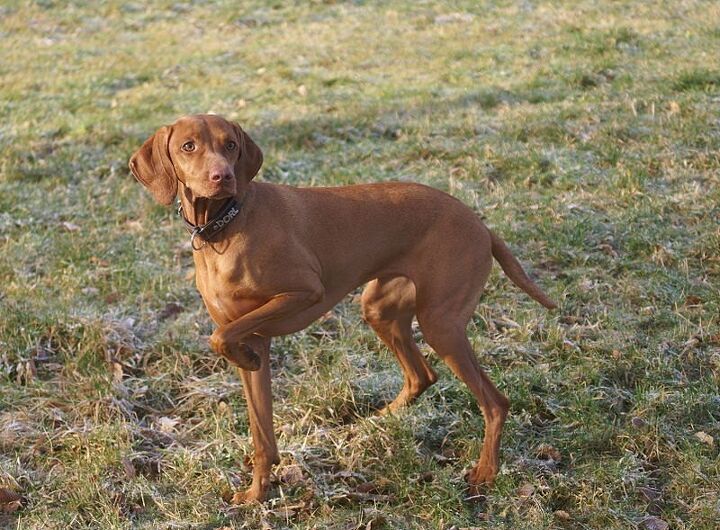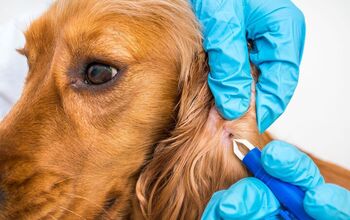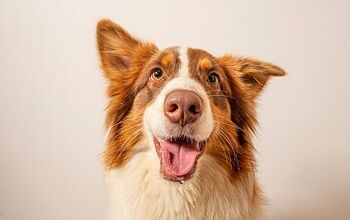Vizsla


About Vizsla
You’ve got to have plenty of energy to keep up with the Vizsla. Gentle, sensitive, and affectionate, these dogs are a wonderful breed for a family… as long as you’re an active one.
Silky and muscular, the average-sized Vizsla is a rare breed. Although it’s commonly kept as a pet, others use it for hunting as it boasts alertness, stamina, and a will that is suited for chasing down prey. With an aura of aristocracy, the Vizsla gets along with everyone. Read on to find out more about this captivating breed.
Gentle, sensitive, and affectionate, Vizslas are a wonderful breed for a family.
The origin of the Vizsla can be traced to the Magyar horde over a thousand years ago, a nomadic tribe in Central Europe that eventually settled in Hungary. In the eighth century, Hungarian barons kept the breed for hunting and as a status symbol. The Vizsla was first depicted in the tenth century, followed by an illustration in the 14th century manuscript of the Vienna Chronicle. Back then, the Vizsla were honed for the fine arts, testing, pointing, retrieving, and sniffing.
To guarantee the breed’s survival after WWI, The Hungarian Kennel Club (MEOE) initiated strict implementation of breed standards, but after WWII, Vizslas were nearly extinct. A few of the breed were saved, and breeding started anew. Today, Vizslas are highly regarded for its hunting and showing abilities.
Since the Vizsla is such an ancient breed, it’s quite difficult to pinpoint which breed it originated from. The Vizsla was used in the development of other breeds, including the Weimaraner, Wirehaired Vizsla and German Shorthair Pointer breeds. As well, there is much conjecture about those same breeds, along with other pointer breeds, that were used to help reestablish the Vizsla breed after its decline.
The Vizsla was recognized by the AKC in 1960.
Since the Vizsla is such an active dog, it’s important to make sure you are giving it enough nutrients. This breed does well on a raw diet, as well as on high-grade dog food that lists the first ingredient as meat. It also does well on chicken or lamb.
Because the Vizsla is so smart, it can be easily trained.
Because the Vizsla is so smart, it can be easily trained. It can be taught to retrieve and point easily, as well as obedience, survival skills, toilet-training, socialization with humans and other animals without many problems.
You should start to train your pup while it is still young. Use rewards, regular feeding and walking sessions as motivation. Always take your dog outside after it eats or drinks a lot of water. You will find that the Vizsla loves pleasing people and will take great pains to follow your commands.
Male Vizslas weigh 45 to 60 pounds, while females weigh 40 to 55 pounds.
Affectionate, expressive, and gentle, the Vizsla makes a great family pet and companion. This breed tends to be protective of its family or owner, and will become easily attached to its master. Don’t be surprised if your pooch follows you wherever you go – that’s why it’s been dubbed the “Velcro” dog. The Vizsla loves children and gets along with other dogs. It is quiet and barks only under certain circumstances. As well, it is the ideal breed for hunters, as it excels in tracking, retrieving, pointing, obeying, and watching.
While trying to preserve the breed, it led to inbreeding, and thus numerous health issues surfaced. Although not all lines of the breed are affected, some of these health conditions include eye and stomach problems. The Vizsla may suffer from progressive retinal atrophy, entropion, ectropion, and corneal dystrophy. With its stomach, this dog may suffer from dysphagia-megaoesophagus, which makes it difficult for the dog to swallow. This disease is characterized by muscle wasting and constant drooling. As well, Vizslas may become allergic to certain food and plants.
Vizslas have a life expectancy of 11 to 15 years.
You are in for a workout with this breed. The Vizsla is needs daily exercise, which can include walking, running, jogging, and other active activities. This breed is receptive to activity challenges in a variety of environments, which are positive not only for mental and physical growth but also socialization purposes.
Affectionate, expressive, and gentle, the Vizsla makes a great family pet and companion.
The American Kennel Club says this about the breed: “Originally from Hungary, the Vizsla is a medium-sized, short-coated hunting dog that is essentially Pointer in type, although he combines characteristics of both pointer and retriever. Sporting an attractive golden rust coat, this “dual” dog is popular in both the field and the show ring due to his power and drive while hunting and his trainability in the home.”
Easy to maintain, the Vizsla’s coat is silky and short, though thick. This hair is consistent throughout its body, legs, and face.
The Vizsla’s coat comes in a variety of shades from coppery gold to rust shade. A coat of yellow or mahogany may not be recognized by some clubs, but any black markings are considered a serious blemish.
You’ll be glad to learn that this breed does not need expensive grooming. You will need to give it a regular bath so its coat stays clean and you should brush its coat on a weekly basis. Even though it is not a heavy shedder, brushing will lessen its shedding as it removes dead hair. To bring out its shine, give your Vizsla a monthly wipe down with a soft cloth.
The Vizsla is full of energy, so you can expect your pup to go non-stop. Regular daily exercise will help a great deal in keeping your puppy in check. If your Vizsla puppy doesn’t get enough activity, it will start to look for trouble.
Photo credit: ©iStock.com/TonicShooter; Steffen Heinz/Wikimedia; Briantresp/wikimedia

Amy Tokic, Editor of PetGuide.com, is a passionate animal lover and proud pet parent of Oscar, a Shih Tzu/Chihuahua cross, and Zed, a Japanese Chin. Her love of animals began in kindergarten, when she brought her stuffed dog Snoopy into class with her every day. Now, she writes about her adventures in pet ownership and tirelessly researches products, news and health related issues she can share with other animal enthusiasts. In her free time, Amy loves perusing used book and record stores, obsessing over the latest pet products available and chasing squirrels with wild abandon (a habit attributed to spending too much time with her pooches).
More by Amy Tokic
























